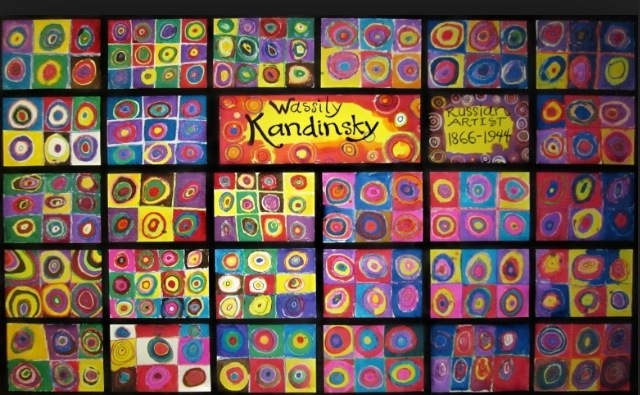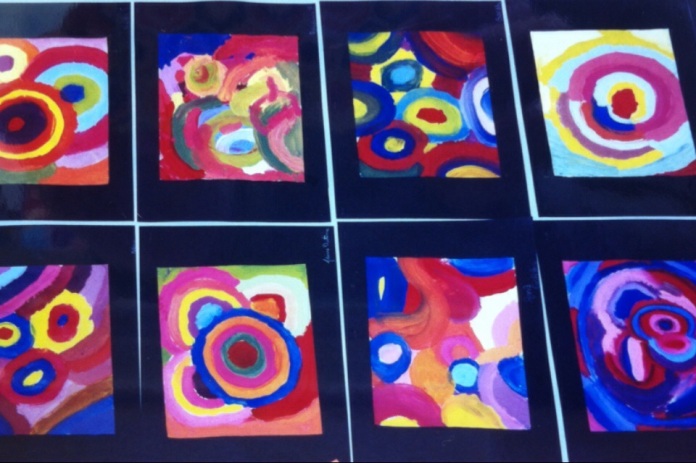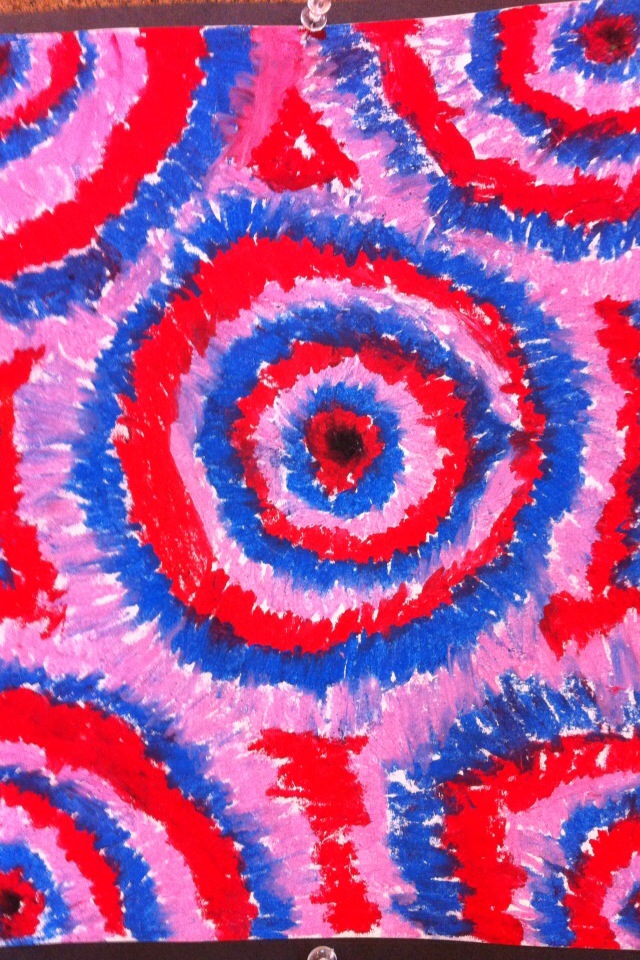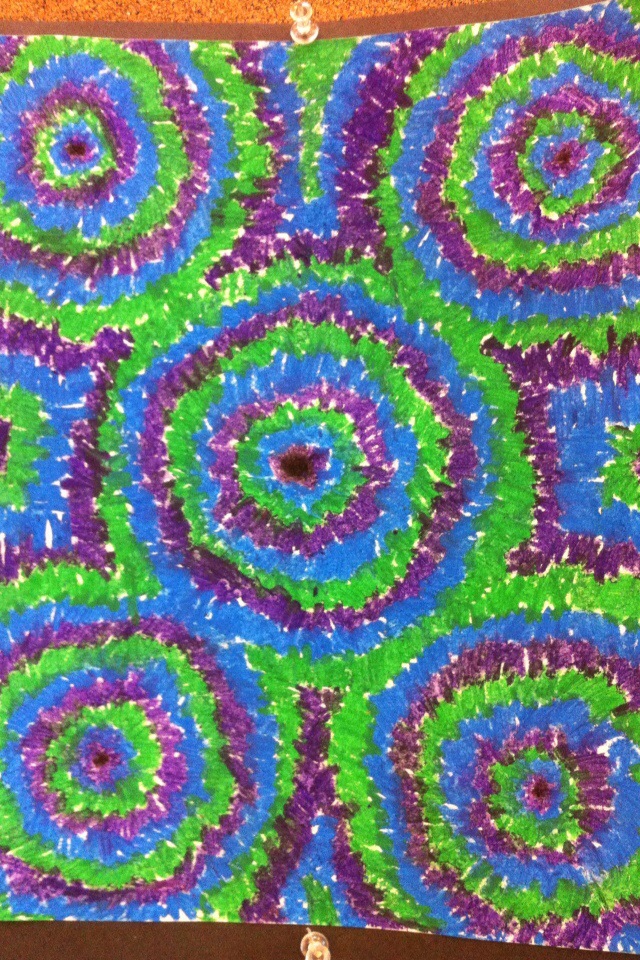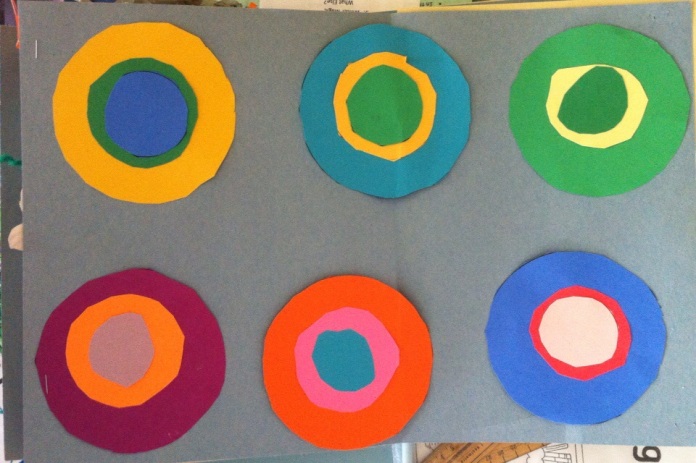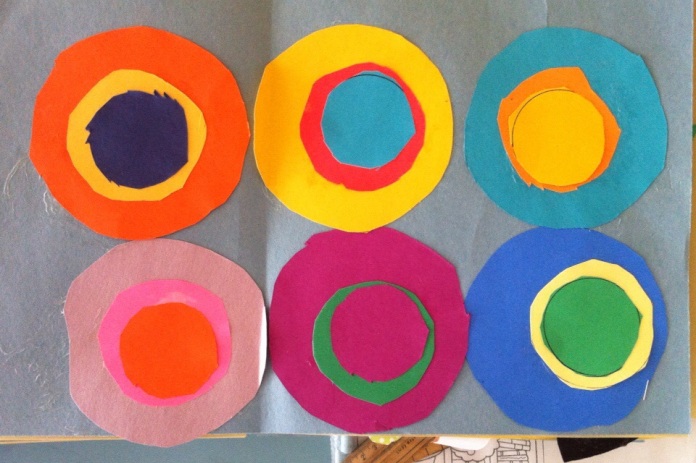A circle is the perfect shape. It is inclusive without being exclusive – it holds it’s heart at the centre but allows a view in every direction. A circle is approachable. It has none of the hard sides or aggressive angles found in other geometric figures. A circle is the shape of the sun. The earth. A flower. A face. It is the first shape children learn to draw and the one we refer to in times of need: circle of friends… circle of life… coming full circle… circle the wagons…
The circle is a favourite shape of many artists. Wassily Kandinsky, the Russian art painter and theorist, used the circle repeatedly in his work.
He also wrote extensively on the subject of art :
“Abstract is the content that painting must express- the invisible that we are.”
Isn’t that eloquent? Art reveals the part of ourselves that can’t be expressed in any other way.
“Lyricism is the pathos of a force whose triumphant effort enters into action and encounters no obstacle.”
The straight line. A single unopposed force.
“When two forces are present and thus enter conflict (the curve, the zigzag), we are in the domain of drama.”
Art drama is always exciting.
Sonia Delaunay, one of Kandinsky’s contemporaries, was another enthusiastic painter of strong colours and geometric shapes – particularly the circle.
Over the years I have seen many tributes to “circle art” in the classroom. Students and teachers love the simple form and it’s complex applications.
And to come full circle:
Round
Bubble
Circle floats
Beyond my grasp
Pop!
(Tonight’s poem is the light and airy Japanese Lantern form. Lanterns can be written singly or strung along in a series – they follow a one, two, three, four, one syllable pattern.)

